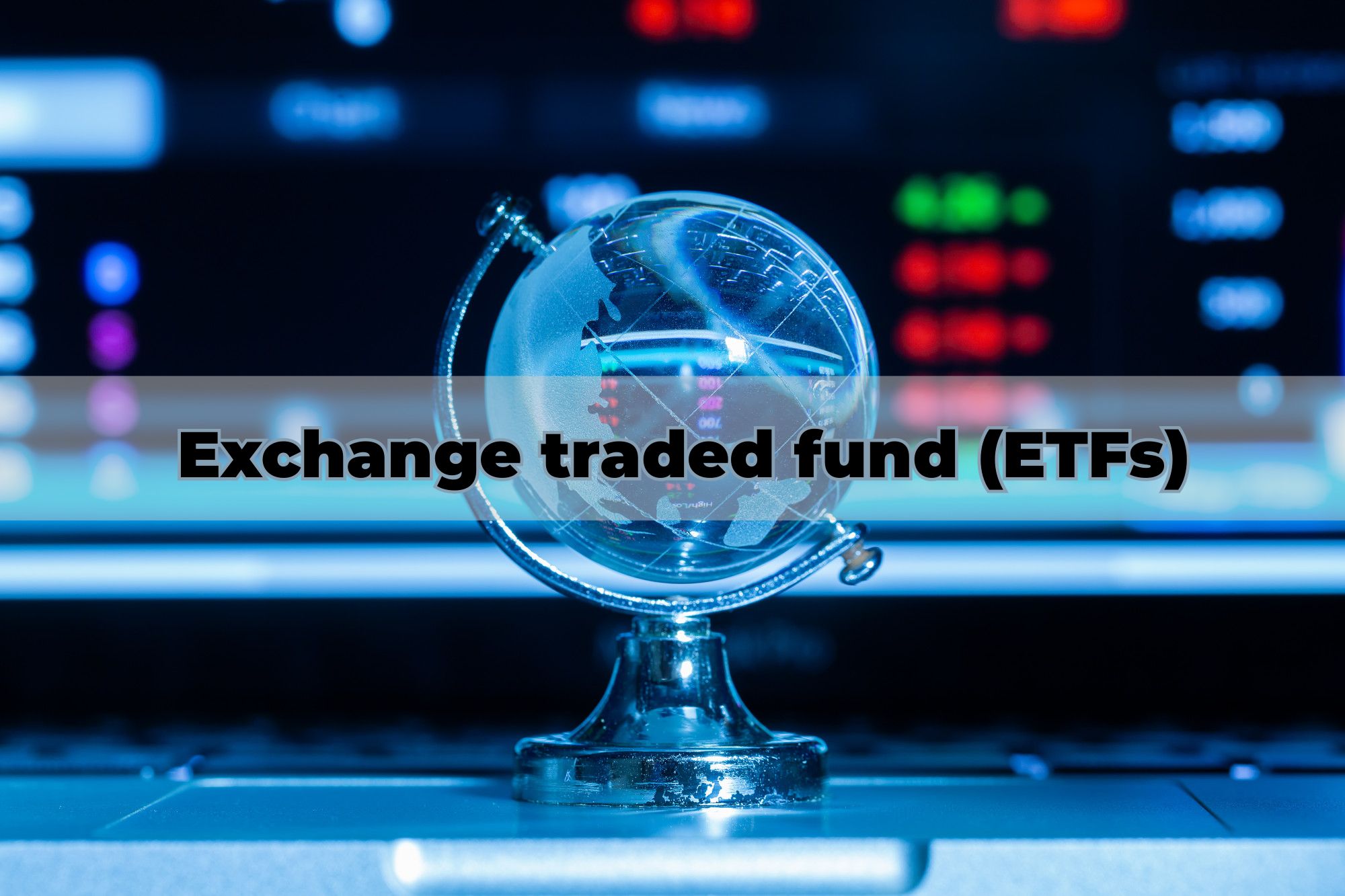What are ETFs and How They Operate

Exploring Exchange-Traded Funds (ETFs)
Exchange traded funds (ETFs) have emerged as a prominent trend in the world of investing over the past two decades, managing an impressive $11 trillion in assets by the end of 2022, as reported by J.P. Morgan. These assets reached historic heights for this rapidly growing asset class. ETFs offer a unique investment opportunity, allowing investors to gain exposure to a diversified collection of assets within a single fund. They trade on exchanges, similar to stocks, and are favored for their adaptability and cost-effectiveness.
Here’s a detailed exploration of ETFs and the reasons behind their allure.
Unpacking ETFs: Functionality and Mechanism
ETFs, essentially, are investment funds that hold a variety of securities, often of the same type. For instance, a stock ETF predominantly comprises stocks, while a bond ETF consists primarily of bonds. Acquiring a share in an ETF translates to owning a fraction of all the stocks or bonds held within that particular fund. For example, if an ETF includes 100 different stocks, an investor in that ETF would possess a fractional stake in each of those 100 stocks.
ETFs are commonly managed passively, implying that these funds typically maintain a fixed portfolio of securities according to a predetermined index of investments. In contrast, many mutual funds are actively managed, with professional investors making investment selections based on anticipated market movements.
Index-based ETFs, such as those following the Standard & Poor’s 500 index, form the core of this investment vehicle. Other popular indices include the Dow Jones Industrial Average and the Nasdaq Composite index. These index-based ETFs, often referred to as index funds, execute a straightforward buy-and-hold strategy, mirroring the constituents of the respective index without making active trading decisions.
An additional advantage of ETFs is their ability to trade on stock exchanges throughout the trading day, offering investors the flexibility to execute trades at their convenience. In doing so, they can determine the exact price at which they wish to purchase or sell the fund.
These conveniences come at the cost of an expense ratio, which is a fee paid by investors for fund management. The rise of ETFs has significantly reduced the expense ratios of both mutual funds and ETFs, primarily due to the popularity of cost-effective passively managed ETFs.
Exploring the Diverse Spectrum of ETFs
Understanding the Different Varieties of ETFs
ETFs are available in a range of categories designed to meet diverse investor preferences and objectives. These categories categorize the market into distinct segments, each addressing specific investment needs and themes.
Let’s delve into some of the most prominent ETF categories and their respective constituents:
- Value Stocks: Value stocks represent equities that appear undervalued when compared to their earnings or assets.
- Dividend Stocks: Dividend stocks comprise equities that offer consistent dividend payouts or possess a robust dividend history.
- Industry: Industry ETFs encompass securities from companies within a specific industry, such as the consumer goods sector.
- Major Indexes: ETFs based on significant indexes like the S&P 500 or the Nasdaq 100.
- Country: Country ETFs focus on stocks with significant exposure to a specific country’s market.
- Company Size: These ETFs concentrate on companies of varying sizes, typically classified as small, medium, or large.
- Bonds: Bond ETFs segment bonds based on diverse characteristics, including safety, duration, and issuer.
- Commodity: Commodity ETFs enable investments in physical commodities (e.g., gold) or companies involved in commodity production.
- Inverse: Inverse ETFs generate profits when the prices of their underlying assets decline, providing investors an avenue to benefit from market downturns.
READ ALSO: ETF vs. Mutual Fund: A Comprehensive Investment Comparison
Fund managers can effectively dissect the market into countless characteristics, catering to the evolving interests of investors.
Advantages of ETFs: Unlocking Investment Opportunities
The Value Proposition of ETFs
ETFs offer a plethora of compelling advantages for investors, chiefly concerning investment variety, accessibility, and cost-efficiency. Furthermore, they empower investors to access specific investment themes.
Investment Variety
ETFs expand the horizon of investment opportunities by creating new investment avenues. With ETFs, you can invest directly in an S&P 500 index fund on the exchange, eliminating the need to purchase individual stocks.
Diversification
ETFs facilitate effortless diversification, a key investment goal for many. A single fund can deliver instant diversification, spanning across an industry or the entire market. Investors can effortlessly purchase multiple funds targeting various sectors.
Cost-Effectiveness
ETFs are known for their cost-efficiency, with expenses consistently decreasing over time. In 2022, the asset-weighted average expense ratio for a stock index ETF was a mere 0.16 percent. Bond index ETFs were even more economical, boasting an expense ratio of just 0.11 percent. Top-tier index funds, such as those tracking the S&P 500, often feature even lower costs.
Focused Investments
ETFs are prized for their capacity to cater to specific sectors or investment themes. Whether it’s high-yield stocks, value-priced equities, or thematic investments, ETFs offer a diversified path to these investment choices.
Tax Efficiency
The structure of ETFs minimizes capital gains distributions, reducing tax liabilities for investors. This tax efficiency is a significant advantage for tax-conscious investors.
Disadvantages of ETFs: Cautionary Considerations
Navigating Potential Downsides of ETFs
While ETFs bring numerous benefits, there are certain drawbacks to keep in mind.
Potential Overvaluation
ETFs may occasionally trade at a higher net asset value than their underlying holdings. This means that investors might pay more for the ETF than the sum of its constituent assets. Though such instances are infrequent and the price differential is typically minimal, they can occur. In contrast, mutual funds always trade at their net asset value.
Misalignment with Stated Objectives
ETFs may not consistently offer the level of targeted exposure they claim. For example, an ETF that aims to provide focused exposure to a specific country may still hold companies with significant international operations. To fully understand an ETF’s composition, it’s essential to scrutinize its holdings.
ETFs vs. Mutual Funds: A Comparative Analysis
Differentiating Between Mutual Funds and ETFs
Mutual funds and ETFs share the goal of providing diversified investment options within a single security. However, they diverge in several critical aspects, which have contributed to the ascent of ETFs, particularly in recent years.
| Category | Mutual Fund | ETF |
| Annual Expense (2022)* | Typically 0.66 percent for actively managed stock funds; 0.44 percent for active bond funds. Stock and bond index funds average 0.05 percent. | 0.16 percent asset-weighted average for stock funds; 0.11 percent for bond funds. |
| Commission | May reach as high as $50 at major brokers, though several brokers offer free trades on select funds. | Free at major online brokers. |
| Initial Minimum | Often several thousand dollars unless purchased within a 401(k) or other retirement plan. | Usually the cost of a single share, sometimes as low as $10 or $20, depending on the fund. |
| Management Style | Active and passive. | Mainly passive. |
| Trading Hours | After the market closes. | When the exchange is open. |
| Investment Strategies | Varied, encompassing value stocks, dividend stocks, bonds, indexes, and more. | Varied, including value stocks, dividend stocks, bonds, indexes, and more. |
| Allows Diversification | Yes. | Yes. |
The predominantly passive management style of ETFs contributes to their lower management fees, ultimately resulting in reduced expense ratios. Over time, this has prompted mutual funds to lower their expense ratios to stay competitive with ETFs.
ETFs vs. Stocks: A Comparative Examination
Contrasting ETFs and Individual Stocks
While ETFs and stocks share the ability to trade throughout the trading day, there are fundamental distinctions between the two.
An individual stock represents ownership in a single company, whereas an ETF comprises a diversified array of stocks and assets. A stock ETF may include holdings from hundreds of different companies, allowing investors to diversify their portfolio through a single security.
This diversification reduces risk compared to holding individual stocks, making ETFs a less volatile investment option.
Are ETFs Suitable for Novice Investors?
The Appeal of ETFs for Beginners
ETFs have gained popularity due to their numerous attractive attributes, making them an excellent choice for novice investors.
Low Minimum Investment
The minimum investment requirements for ETFs typically amount to the cost of a single share, which can range from a modest sum to a few hundred dollars. This stands in stark contrast to mutual funds, which often demand several thousand dollars for an initial investment. Some brokers even allow fractional share purchases, eliminating the need for a full share purchase.
Commission-Free Trading
Many brokers offer commission-free trading for ETFs, including notable platforms like Charles Schwab, Fidelity, and Robinhood. This accessibility enables entry into the investment world at a minimal cost.
Thematic Investing
ETFs empower investors to participate in specific investment themes, even if they lack in-depth knowledge of the sector. For instance, a specialized biotech ETF provides exposure to the biotechnology industry without requiring investors to handpick individual companies.
Diversification
ETFs offer instant diversification, allowing investors to acquire a specific set of companies focusing on a particular market sector or even encompassing the entire market. This diversification mitigates risk and enhances portfolio stability.
Market Ownership
Investors can effortlessly purchase ETFs tracking popular indexes like the S&P 500, providing the opportunity to “own the market” and potentially achieve the market’s historical annual return, which has averaged around 10 percent.
Are ETFs a Sound Investment Choice?
Evaluating ETF Investment Performance
The performance of an ETF is intricately linked to the performance of the assets it comprises. When the underlying assets of the fund appreciate, the ETF’s value also increases. Conversely, if the assets lose value, the ETF’s price will decline. Essentially, an ETF’s performance is a weighted average of its constituent holdings.
However, the structure of ETFs is conducive to investors, primarily due to its cost-efficiency. ETFs boast low expense ratios, as they adopt a passive investment approach, tracking predetermined indexes rather than engaging costly active fund management. The primary objective of a passive ETF is to replicate the performance of its target index.
Additionally, ETFs offer an array of benefits, such as low minimum investment requirements, diversification, thematic and focused investment choices, and a wide selection of funds.
To Recap
In conclusion, ETFs have witnessed significant growth in recent decades, with their popularity showing no signs of waning. Even legendary investor Warren Buffett has recommended one of the most favored investment strategies, purchasing and holding an S&P 500 index fund. While the influx of funds into ETFs may experience fluctuations with market conditions, the long-term trend in favor of ETF investing remains apparent.
FAQs
What is the minimum investment required for ETFs?
- ETFs typically require the cost of a single share, which can vary from a modest sum to a few hundred dollars.
How do ETFs differ from mutual funds in terms of management style?
- ETFs are mainly passively managed, while mutual funds can be actively or passively managed.
What are the advantages of investing in ETFs for novice investors?
- Novice investors benefit from low minimum investments, commission-free trading, diversification, and the ability to participate in specific investment themes.
Are there any tax advantages to investing in ETFs?
- ETFs are known for their tax efficiency, minimizing capital gains distributions and reducing tax liabilities for investors.
What is the historical annual return of the S&P 500, and how can investors access it through ETFs?
- The historical annual return of the S&P 500 has averaged around 10 percent, and investors can access it through S&P 500 index ETFs, allowing them to “own the market
In other related article, The Benefits of Long-Term Investments: Securing Your Financial Future





